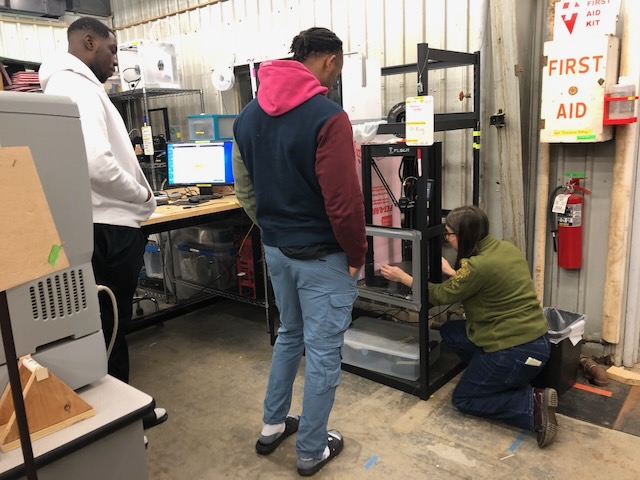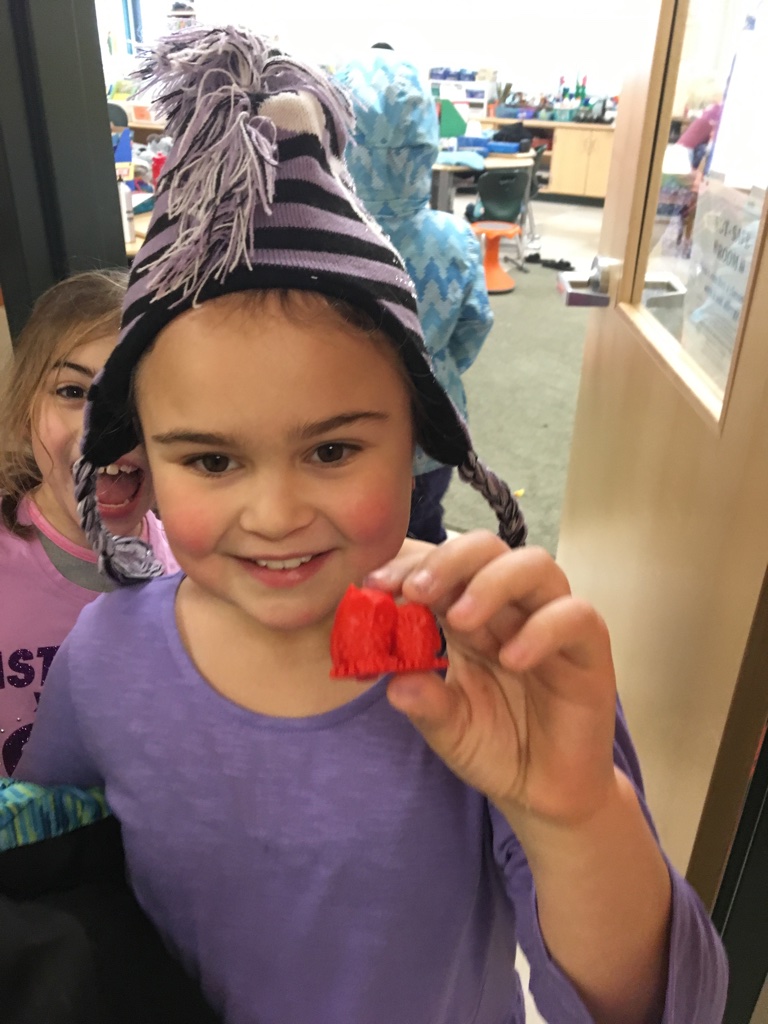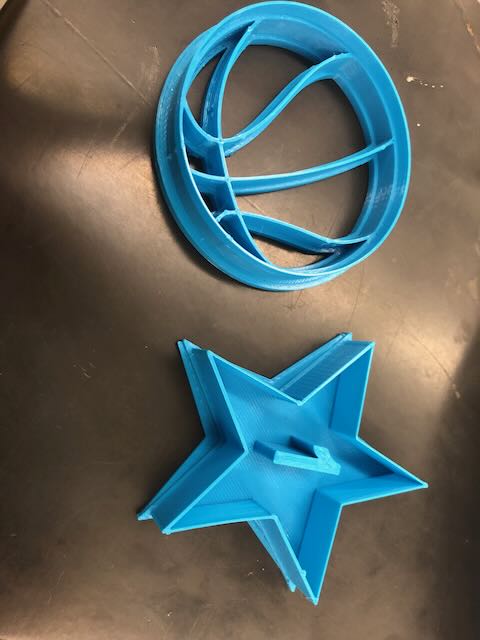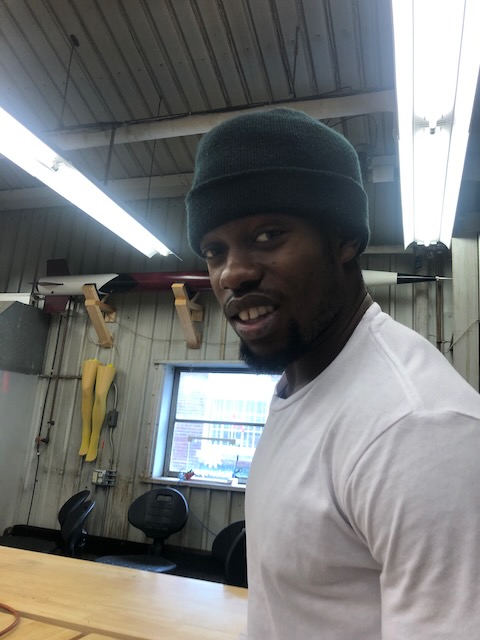I recently retired from active K-12 teaching after having taught since 1992 as a third grade classroom teacher, PK-6 tech teacher, and middle/high school engineering, and Computer Science teacher. Although I’ve taught many courses for teachers for the Tufts Center for Engineering Eduction and Outreach, I recently taught a college courses for the first time. The course is a new one for me called EDUC 647M – Making and Makerspaces in Education for the University of Massachusetts College of Education.
During my time as an elementary tech teacher, I taught mostly K-6 but did PK some years (mostly easy to use robots called BeeBots). I was nervous but also excited to teach college students for the first time. I have gradually moved up in ages in my teaching – kind of following the age of my son – who is now a junior in high school. I really enjoyed teaching middle and high school at the end of my full time K-12 teaching. High schoolers were particularly fun to see how much they could do in my engineering design classes. Prior to teaching, I was an electrical engineer and computer scientist for about 10 years.
Today, I want to share an experience from the UMASS MakerSpace class. The class was a remote class so we did not meet weekly like most UMASS College of Education classes. I did notice that there were six athletes in the class and two wonderful, active teachers who were already creating hands on learning for their students. I decided to have weekly office hours at the UMass Amherst All Campus Makerspace when I saw some of the student athletes were not keeping up. I also knew that teaching Arduino circuits and 3D printing would be challenging to do all online. Two of the football players Sammy and Connor started coming to office hours after a lot of outreach on my part. Connor was like a kid in a candy shop when he saw the makerspace and could not wait to start building things. Sammy was very quiet and soft spoken and I had a challenge figuring out how much help he needed.
Connor and I were the only 2 white males in the class. There was a female Muslim teacher from Turkey who had a 4 month old and a Latina female teacher. Everyone else was black or biracial (as best as I could figure). I have to say I noticed many stereotypes coming up in mind especially based on “black athlete”. I did my very best not to act on these stereotypes in any way and stay open to each individual in the moment. I clearly saw the futility of such assumptions especially with one of basketball players who I first thought was black but I later found out had a Cuban American father from Florida. So my stereotypes jumped around with this new information. It showed me clearly that these ideas I carry around have no validity.
I decided to have required office hours when it came to the week for 3D printing. Besides the two teachers and two football players who had come previously, two of the basketball players came. Here’s a photo of them getting some help from the director of the All Campus Makerspace.

These two along with the two football players – especially Connor, an offensive lineman – had the tendency to make me feel rather small, being of average height (5 feet 8 inches and weight 180 pounds). On the left is Isaac, one of two centers on the basketball team who is listed as 6 feet 7 inches and 259 pounds. [In one of his games, I had to laugh because one of UMASS guards just followed behind him as a screen as he walked into the “paint”.]
I started working with Isaac on some Arduino circuits. I had no idea who knew what about programming and circuits so I tried not to assume anything. I had a sense I might be talking down to Isaac so I tried to get more information on his background. It turned out he was an also a graduate student at another school studying artificial intelligence and he also had done a good deal of Python programming. Arduino uses C++ by default so he did need some support with that. Once we got to talking and I shared my background in software and electrical engineering, things went really well. That was definitely of my major takeaways with teaching college students: make a personal connection. Since I am a big sports fan and have been following UMASS football and basketball for years, that also helped make a connection with these students.
With a little support, Isaac got a little blinking LED circuit to work – hardware and software. His face lit up and I really connected this with the same smile and feeling that I have seen with students of all ages even three and four year old, thirty pound, pre-school students. Here’s a photo of Isaac taking a video of his working circuit.

This really struck me as the same look I saw year after years of working with K-12 students. Perhaps, I should not have been so surprised. [I have taught a lot of teachers too but much of that has been remote so I miss these special moments.] Here’s a elementary student who 3D printed out some owls from thingiverse.com
.

I started to wonder why students of all ages experience this feeling when they make something. I should acknowledge here that not all the moments leading up to “the smile” are joyful! There can be frustration, confusion, and anxiety. The art of teaching hands on joyful learning is in creating experiences that are challenging but doable and – within the parameters of what the student chooses to build – provided the right level of support and scaffolding. But these joyful moments can be looked at through many different theoretical lenses such as Papert’s constructionism, which says one of the best ways to gain real knowledge of something is by building it (though the focus tends to be more on how knowledge is constructed rather than with the social emotional aspects). LEGO Serious Play is another framework that posits that play is a great way to learn and gain knowledge.
Here’s a 3D print from one of the basketball players, who designed, printed, and made basketball cookie cutters and brought cookies to the final demos (extra points for the cookies!).

I also thought about the connection with sports. I saw Isaac with the same joy when a teammate got a last second three pointer to win a close game. Is it a feeling of competence and accomplishment that brings the joy? Is there something about realizing something in the physical realm – either building or sports – that brings particular satisfaction?
My experience with the college athletes reminded me of my own father, who was a big sports fan, and was a three letter high school athlete in football, baseball, and basketball and who also played college (Northeastern) football (fullback). I got a small glimpse into how demanding playing D1 college sports is and I had to be flexible with deadlines and make meaningful connections and lots of outreach with the student athletes in particular.
Finally, I thought about how schools in many cases *do not* encourage this creativity. I’ll never forget an experience I had in a Catholic kindergarten when I proudly discovered that my snack break milk in a dixie cup fit exactly on the Ritz crackers the nuns gave us. I was slapped on the hand for this discovery! Football player Sammy (photo below), I sensed, also did not get to be creative in school and from talking to him, this course was the first time he experienced joyful, hands on learning. Here’s how he puts it.
To reflect, I’ve gained valuable knowledge of the makerspace community and the
openness it has for students from all walks of life. I wished I was a part of a
makerspace sooner so that this wasn’t my first time being exposed to these valuable
lessons but when I look at it, the world itself is its own makerspace. I just never
thought that far. This course shifted my perception on education and life in a positive
way. As students we grow up being told what we should be or what it we should do
once we graduate. You rarely hear that you should probably just create whatever it is
you dreamed of and do that your whole life.

It certainly has brought me a lot of happiness creating these joyful learning experiences for students and that has been very motivating to continually try to improve my own facilitating of these experiences. I applaud other teachers who are also creating these experiences. All students should be experiencing joyful learning at all ages!
